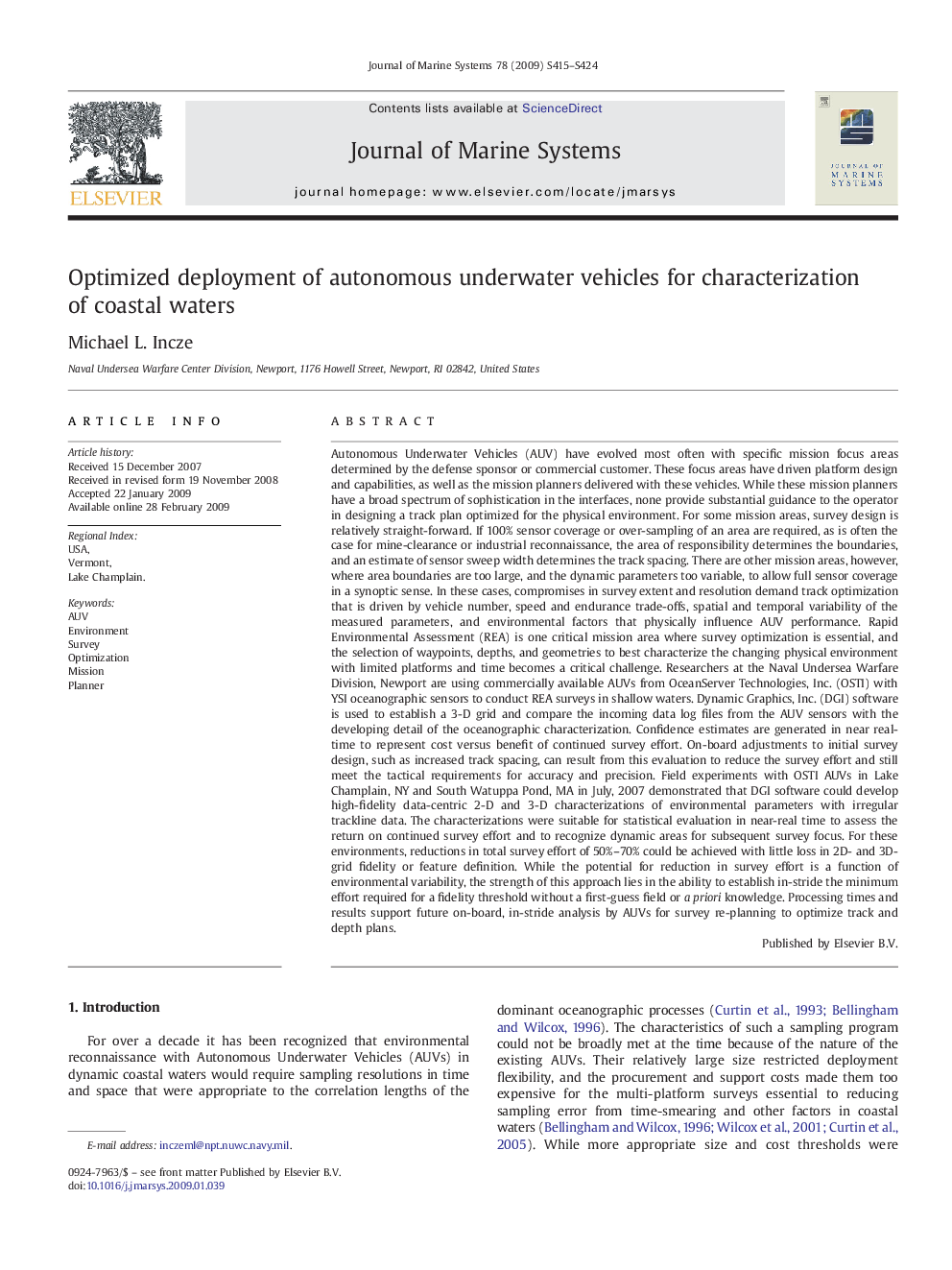| کد مقاله | کد نشریه | سال انتشار | مقاله انگلیسی | نسخه تمام متن |
|---|---|---|---|---|
| 4548963 | 1327936 | 2009 | 10 صفحه PDF | دانلود رایگان |

Autonomous Underwater Vehicles (AUV) have evolved most often with specific mission focus areas determined by the defense sponsor or commercial customer. These focus areas have driven platform design and capabilities, as well as the mission planners delivered with these vehicles. While these mission planners have a broad spectrum of sophistication in the interfaces, none provide substantial guidance to the operator in designing a track plan optimized for the physical environment. For some mission areas, survey design is relatively straight-forward. If 100% sensor coverage or over-sampling of an area are required, as is often the case for mine-clearance or industrial reconnaissance, the area of responsibility determines the boundaries, and an estimate of sensor sweep width determines the track spacing. There are other mission areas, however, where area boundaries are too large, and the dynamic parameters too variable, to allow full sensor coverage in a synoptic sense. In these cases, compromises in survey extent and resolution demand track optimization that is driven by vehicle number, speed and endurance trade-offs, spatial and temporal variability of the measured parameters, and environmental factors that physically influence AUV performance. Rapid Environmental Assessment (REA) is one critical mission area where survey optimization is essential, and the selection of waypoints, depths, and geometries to best characterize the changing physical environment with limited platforms and time becomes a critical challenge. Researchers at the Naval Undersea Warfare Division, Newport are using commercially available AUVs from OceanServer Technologies, Inc. (OSTI) with YSI oceanographic sensors to conduct REA surveys in shallow waters. Dynamic Graphics, Inc. (DGI) software is used to establish a 3-D grid and compare the incoming data log files from the AUV sensors with the developing detail of the oceanographic characterization. Confidence estimates are generated in near real-time to represent cost versus benefit of continued survey effort. On-board adjustments to initial survey design, such as increased track spacing, can result from this evaluation to reduce the survey effort and still meet the tactical requirements for accuracy and precision. Field experiments with OSTI AUVs in Lake Champlain, NY and South Watuppa Pond, MA in July, 2007 demonstrated that DGI software could develop high-fidelity data-centric 2-D and 3-D characterizations of environmental parameters with irregular trackline data. The characterizations were suitable for statistical evaluation in near-real time to assess the return on continued survey effort and to recognize dynamic areas for subsequent survey focus. For these environments, reductions in total survey effort of 50%–70% could be achieved with little loss in 2D- and 3D-grid fidelity or feature definition. While the potential for reduction in survey effort is a function of environmental variability, the strength of this approach lies in the ability to establish in-stride the minimum effort required for a fidelity threshold without a first-guess field or a priori knowledge. Processing times and results support future on-board, in-stride analysis by AUVs for survey re-planning to optimize track and depth plans.
Journal: Journal of Marine Systems - Volume 78, Supplement, November 2009, Pages S415–S424